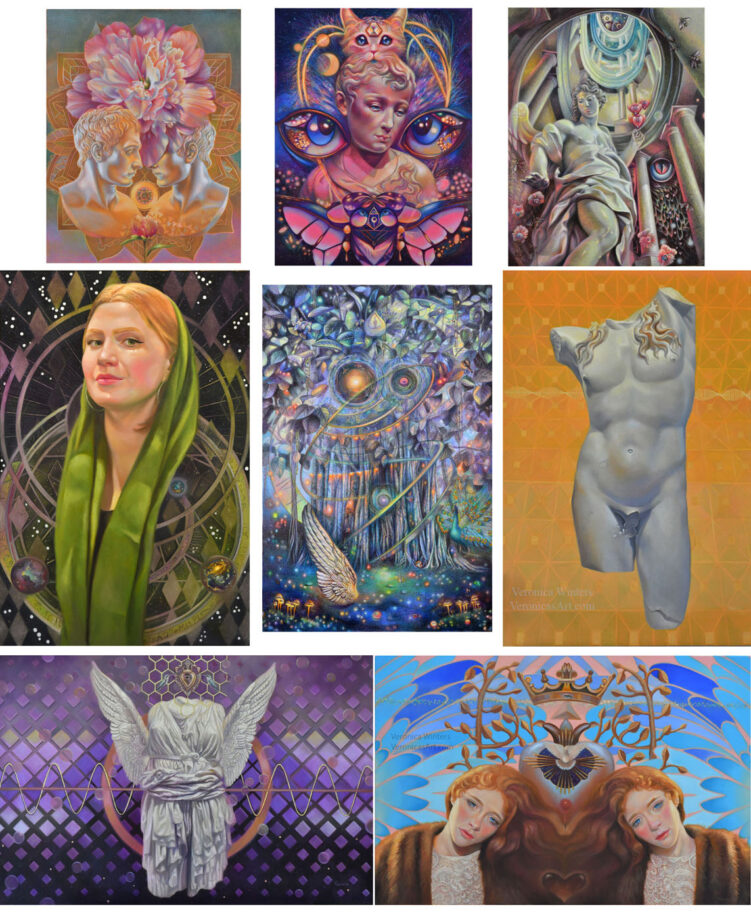Casa Azul, the Frida Kahlo’s house in Mexico City: is it worth the visit ?
Located in the Xochimilco district, Coyoacán neighbohood of Mexico City, the Blue House is the home and studio of famous surrealist female artist – Frida Kahlo. She is the most known Mexican painter promoted across numerous art museums in the US. Frida Kahlo was an amateur surrealist painter, a feminist icon, and a wife of famous Mexican muralist – Diego Rivera whom she married in 1929.
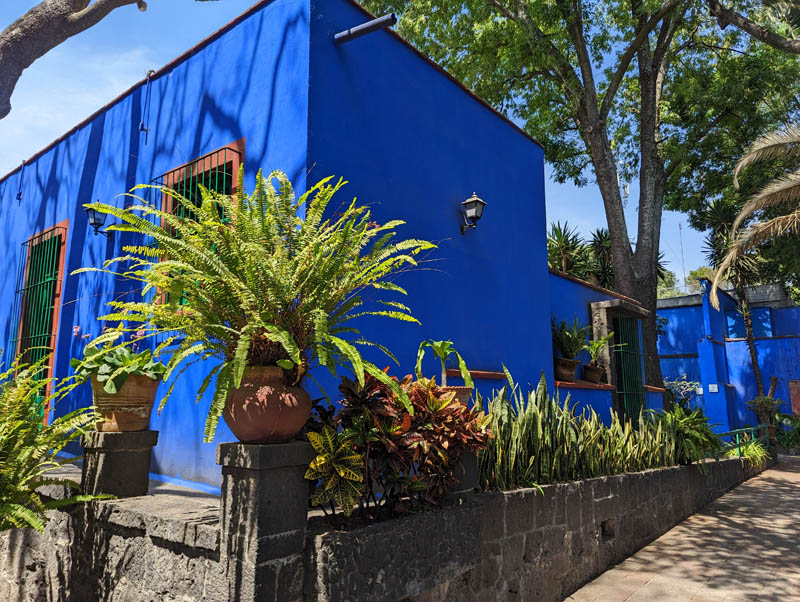
The Casa Azul (Blue House) was built in 1904, long before Frida was born. It became her childhood home, a witness to her joy, pain, and unwavering passion for art. Here, amidst splashes of cobalt blue and Mexican folk art, the house became a shared haven for the artist’s tumultuous yet creative partnership with Diego Rivera. The Casa Azul museum doesn’t display famous art by Frida but mostly exhibits personal objects, small art, photography, pre-Columbian sculptures, documents, books and furniture of the artist.
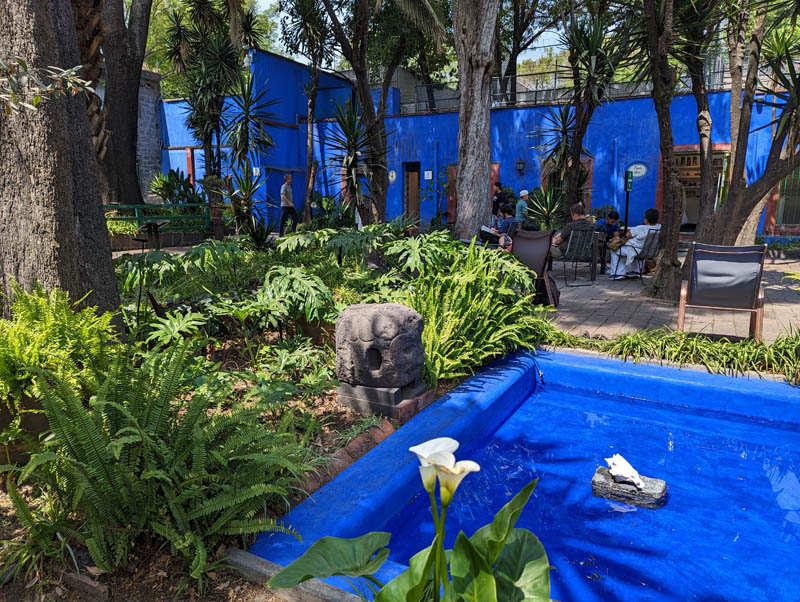
The museum is a living space, infused with the echoes of Frida’s presence. Temporary exhibitions inside the house weave narratives around her life and art, while well-maintained lush garden, once Frida’s sanctuary, invites quiet contemplation.
Stepping into Frida’s World: the studio
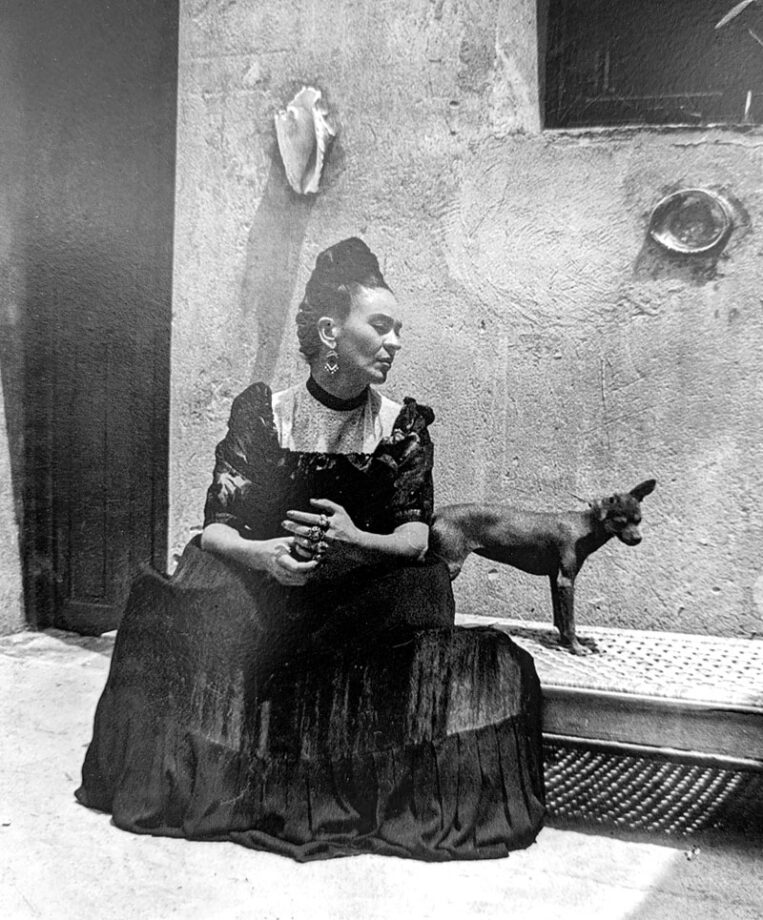
Stepping into the museum is like stepping into Frida’s soul. Her studio, one of the rooms in the house, displays art supplies, objects, easel and inspiration of the artist. The windows bath the studio in warm light and provide the views into green-blue courtyard. It’s impossible not to notice that this house with a studio is modest in contemporary terms but it was definitely specious and cozy for that time period.
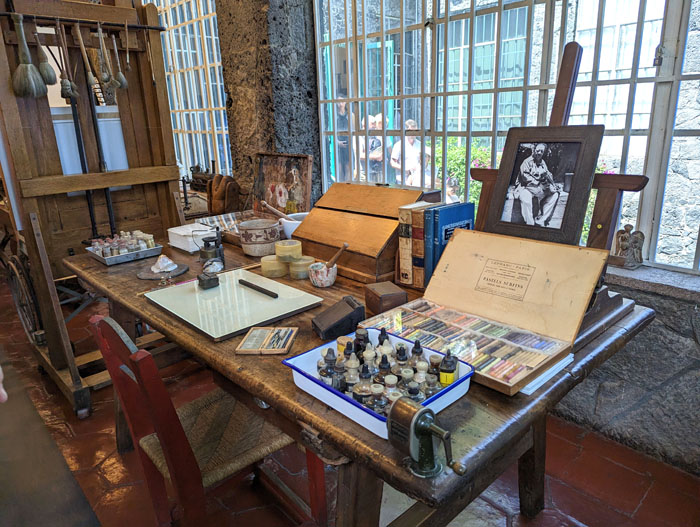
A Tangled Triangle: Frida Kahlo, Diego Rivera, and Leon Trotsky
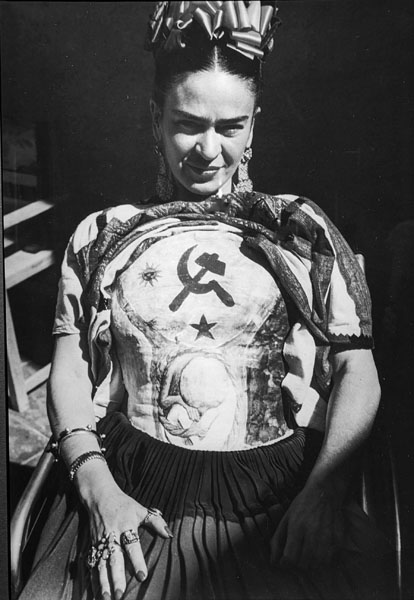
Frida Kahlo and Diego Rivera had a tumultuous relationship. Although they shared passion and love for each other, Frida weathered many infidelities by her husband, and entered into extramarital affairs herself. In 1937, Leon Trotsky, the exiled Russian revolutionary, found refuge in Mexico, courtesy of Diego Rivera’s political leanings. He and his wife Natalia Sedova moved into Casa Azul, creating an unorthodox mix. As Diego became increasingly disillusioned with Trotsky’s political stances, Frida and Trotsky were known to have a short-lived affair, fueled by intellectual connection and perhaps a desire for revenge against Diego’s infidelity. When Trotsky and Natalia moved out, the friendship between Frida and Diego fractured, and Frida poured her emotional turmoil into her art, most notably the poignant “Self-Portrait Dedicated to Leon Trotsky.”
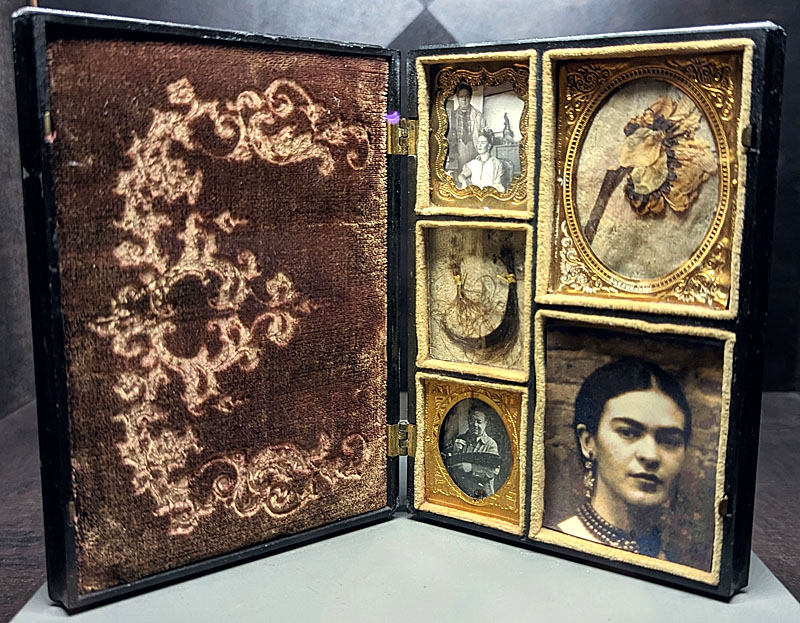
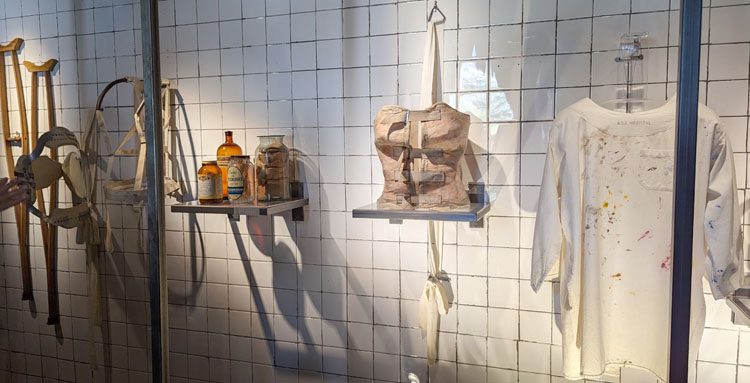
The Artist’s Bedroom
The artist’s bedroom is modest with the mirror that her mother had put into her room after the accident. Unable to move for almost a year, Frida began to paint in her bed.
Kitchen
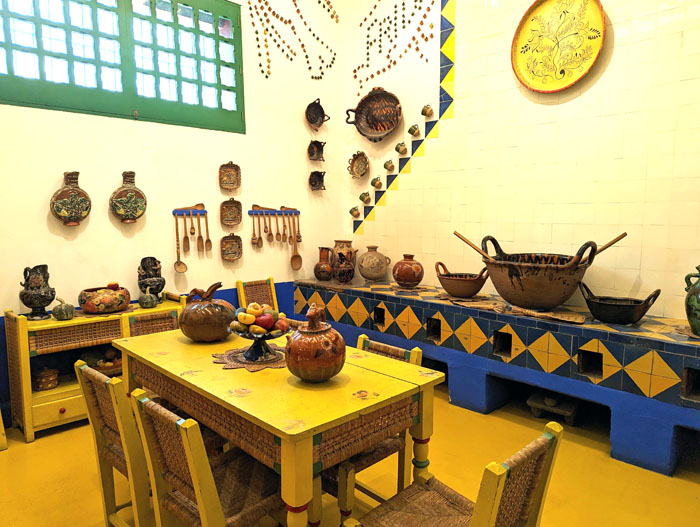
Frida’s dresses
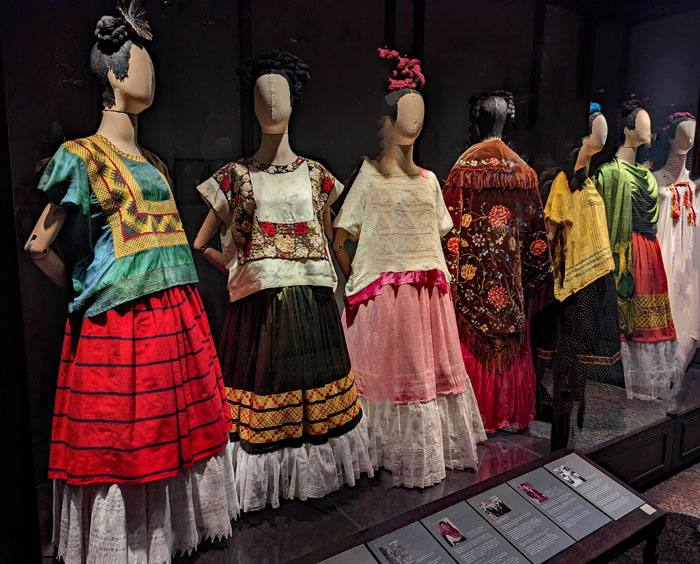
“Writer Carlos Fuentes described how Frida’s arrival at the Palacio de Bellas Artes would be announced by the sound of her jewellery and how the architectural grandeur of the palace, its paintings and the captivating music of its concerts would be instantaneously outshone by her striking presence. Some of her closest friends have described how Kahlo would take special care in choosing each one of her garments, styling herself from head to toe, with the most beautiful silks, lace, shawls and skirts, some of which can be admired in this gallery. On the street, children would ask her “Where is the circus?” and she would just smile graciously and continue walking.
October 1937 marked a major step for Frida’s future influence in the fashion world, when Vogue featured her for the first time in the pages of the magazine. Later, in 1939, André Breton organized Kahlo’s first exhibition in Paris. It was called Mexique and her Tehuana dress became an instant sensation among European elites. It is said that star designer of the day Elsa Schiaparelli created a dress in her honor that was named ‘La Robe Madame Rivera.
It was the Tehuana dress that Kahlo chose as her signature dress; to define her identity and to portray her cultural heritage and political beliefs. Her wardrobe is mostly composed of Mexican traditional pieces from Oaxaca and other parts of the country. Nonetheless, there are also ethnic garments from Guatemala and China, as well as an interesting collection of European and American blouses. Kahlo used to combine these pieces to style herself and her favorite colors were red, green, blue, black and white. The development of her distinctive style as a blend of traditional Mexican and European fashion, as well as the fundamental effects of her disabilities, is represented through this selection of Kahlo’s most iconic looks. Kahlo as a bohemian artist, a Tajuana, a hybrid – representing her own mixed European and Mexican blood.”
1. Carlos Fuentes, introduction to The Diary of Frida Kahlo,
New York, Abrama, Ine, 1995, p. 7. 2. Hayden Herrers, preface to Frida: A Biography of Frida Kahlo,
United States, Harper Perennial, 2002, p. X
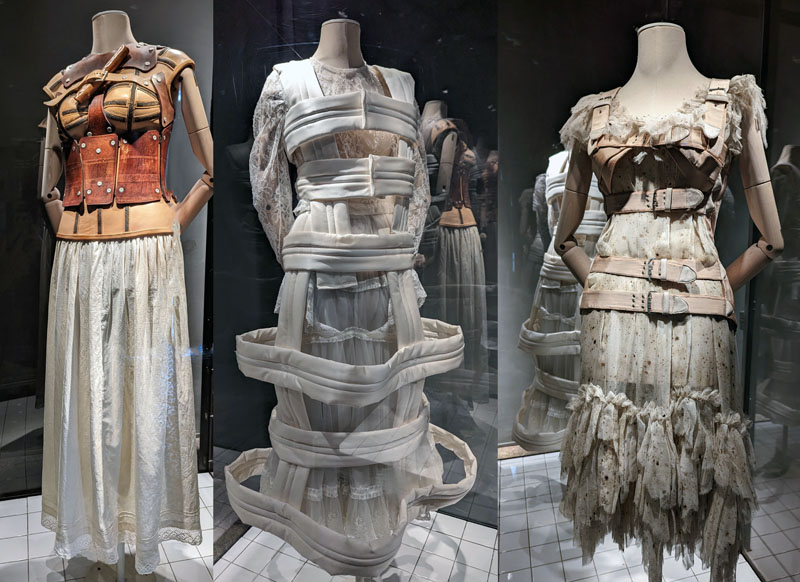
Transforming Grief into Legacy:
Frida Kahlo is a symbol of female empowerment and artistic defiance in art history of the West. Her story, whispered through the cobalt-blue walls, continues to inspire artists and dreamers alike. Frida died in 1954. Grief-stricken, Diego Rivera set about creating a lasting tribute to her life and work. He transformed the house into a museum, officially inaugurating it in 1958. It was his way of keeping her spirit alive, sharing her story with the world.
Is it worth your visit?
While the museum has a historic value of course, it’s rather small in today’s terms, crowded, and doesn’t have as much art as you may think could be found there. It also requires advanced purchase of tickets stamped with day and time. So if you plan to visit it, you must purchase the tickets before traveling to Mexico. Personally, I didn’t find the house fascinating but the Rivera’s Pyramid- museum was really interesting and definitely worth your visit! The Blue House ticket price includes the visit to the Anahuacalli. Be aware that it’s located in a different part of town and we used Uber to go there.
Address: Londres 247, Del Carmen, Coyoacán, 04100 Ciudad de México, CDMX, Mexico. Visit: https://www.museofridakahlo.org.mx/visita/
Anahuacalli: A Temple of pre-Hispanic art rising from Diego Rivera’s passion
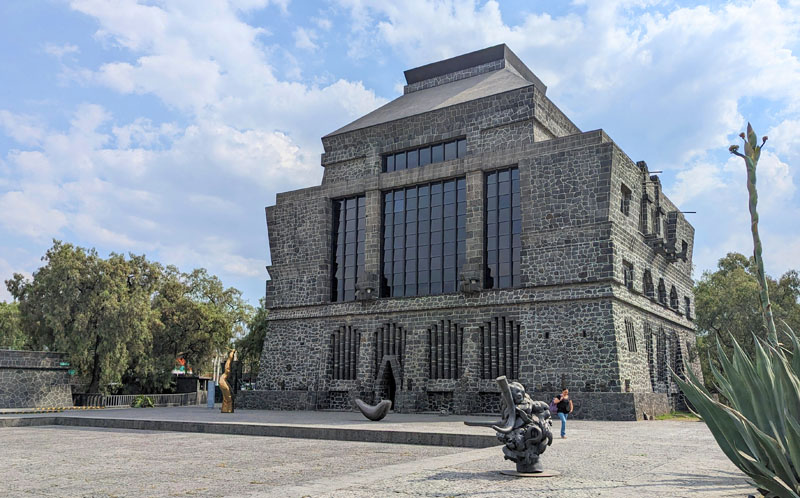
The eruption of Xitle, in the year 400 BC, created a landscape of layers of lava that, when solidified, formed an ecosystem of desert plants. The architecture of Anahuacalli was integrated into this biosphere, thought by Diego as a sacred receptacle in connection with the underworld.
from the museum’s website
Rising from volcanic rock, the Anahuacalli’s name, derived from the Nahuatl language, translates to “house surrounded by water”. Throughout his life, Rivera amassed a vast collection of pre-Hispanic artifacts, captivated by the history, wisdom and beauty of ancient Mexican cultures. He dreamt of a space to house these treasures, not just as a collector, but as a storyteller, an educator, and an artist himself.
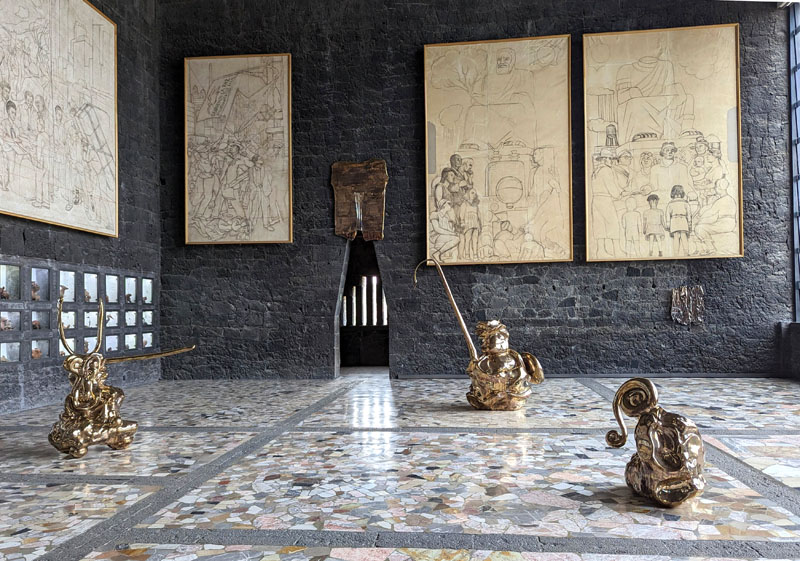
In 1943, Rivera began translating his vision into reality. He designed the Anahuacalli, drawing inspiration from Mayan and Aztec pyramids, using volcanic rock and concrete to create a sense of permanence and power. The building’s façade features sculptures reminiscent of pre-Hispanic iconography, hinting at the treasures within. The building consists of different levels with a varied amount of natural light, symbolizing a journey from the underworld to the sun. As a collector, Diego Rivera amassed over 45 thousand pieces of pre-Columbian art – comprising Jalisco, Colima, Nayarit and Michoacán.
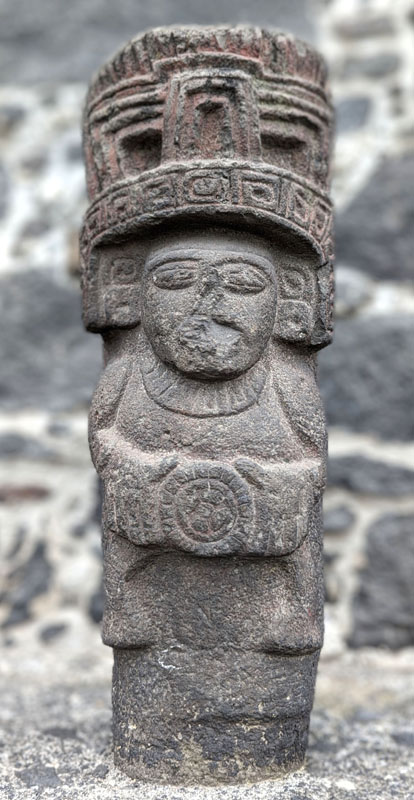
Inside, the museum unfolds like a journey through time. Dark rooms showcase Rivera’s collection of over 6,000 pre-Columbian artifacts – terracotta figurines, masks, ceremonial objects – each whispering stories of forgotten civilizations. Rivera carefully arranged these pieces, not as mere exhibits, but as characters in a grand narrative, weaving together threads of mythology, ritual, and daily life. Ancient figurines are fascinating to look at as they are varied and represent different time periods. This museum is as interesting as the Archeological museum in Mexico City.
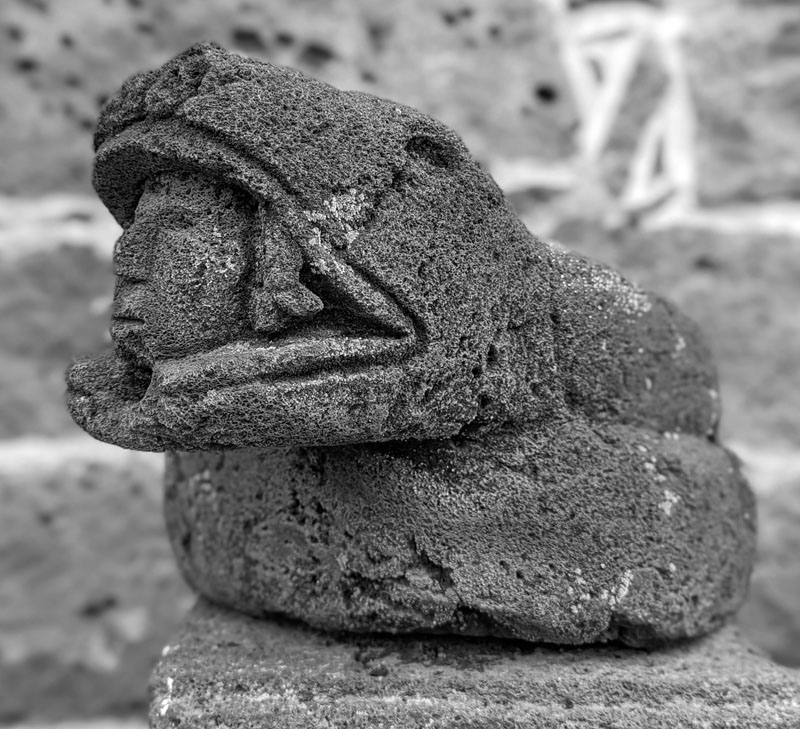
The Anahuacalli was envisioned as a cultural space, a “City of Arts,” where artists of all disciplines could find inspiration and collaboration. He designed studios, gardens, and courtyards, dreaming of a vibrant hub where creativity could flourish across generations. Unfortunately, Rivera’s ambitious vision for the Anahuacalli remained largely unrealized. He passed away in 1957, leaving the project incomplete. His wife, Frida Kahlo, ensured the museum’s completion and official opening in 1964, though Rivera’s dream of a bustling “City of Arts” never materialized.
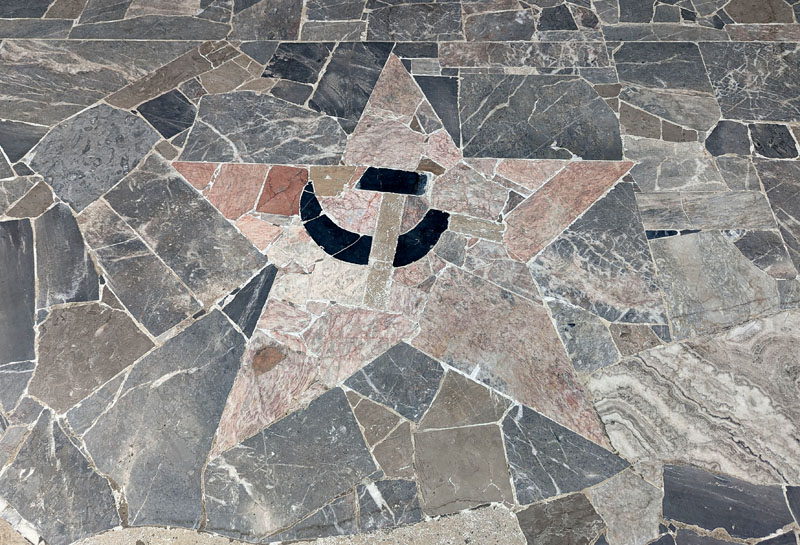
The Anahuacalli stands as a testament to Rivera’s legacy. It’s a well-organized, yet underrated art museum and an architectural marvel! Its pre-historic art collection is inspirational and educational for us to learn about the ancient wisdom and artistic spirit of the peoples of Mexico. It is a unique temple of Mexican art that you must see in person!
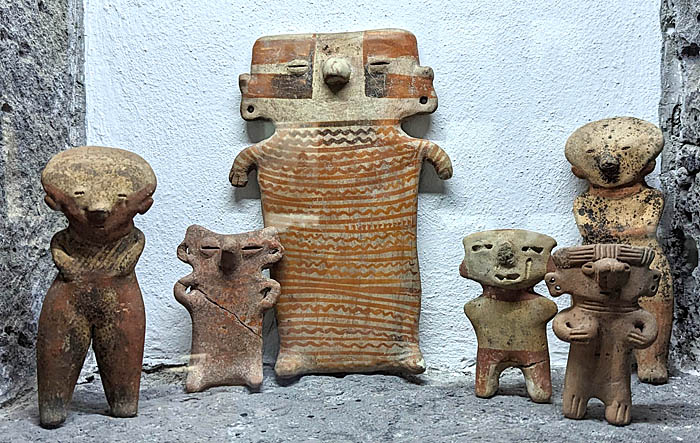
The ticket to the Frida Kahlo Museum includes admission to the Diego Rivera-Anahuacalli Museum! More information:https://museoanahuacalli.org.mx/
Leon Trotsky’s Turbulent Exile in Mexico City: a story of defiance and assassination captured inside the house-museum
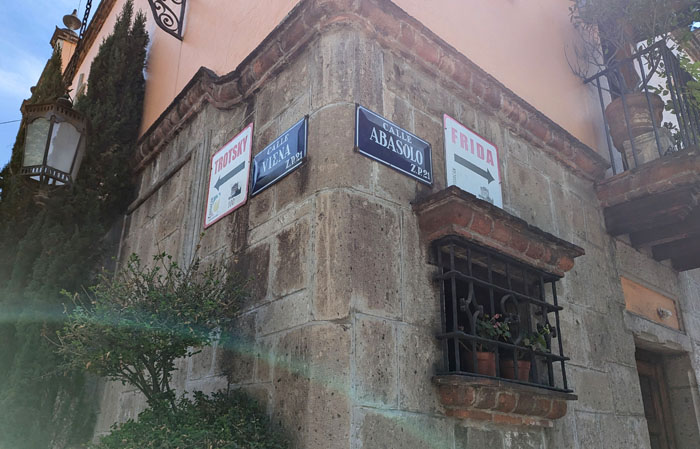
Trotsky house-museum is situated very close to the Blue House and is worth your visit! It doesn’t require advanced reservations as it’s half-empty and obviously not as known to the West as Frida Kahlo’s art.
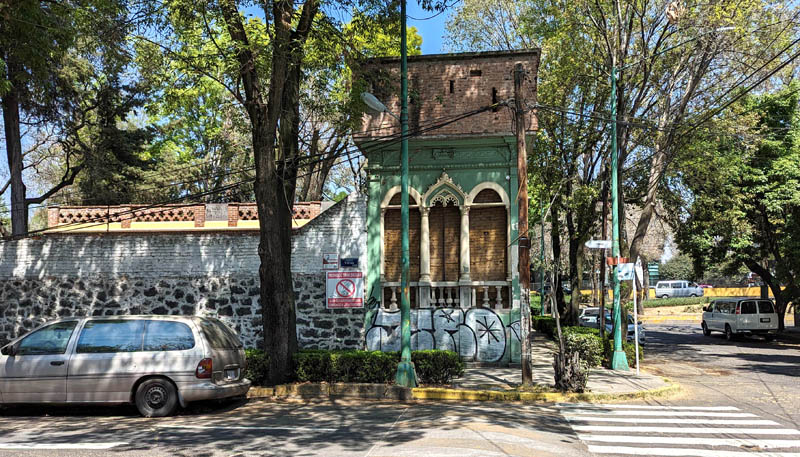
Leon Trotsky, a towering figure of the Russian Revolution, found himself ostracized and hunted after falling out of favor with Joseph Stalin. His exile in Mexico City from 1937 to 1940 was a period of immense personal struggle, marked by intellectual defiance, political isolation, and ultimately, a brutal assassination.
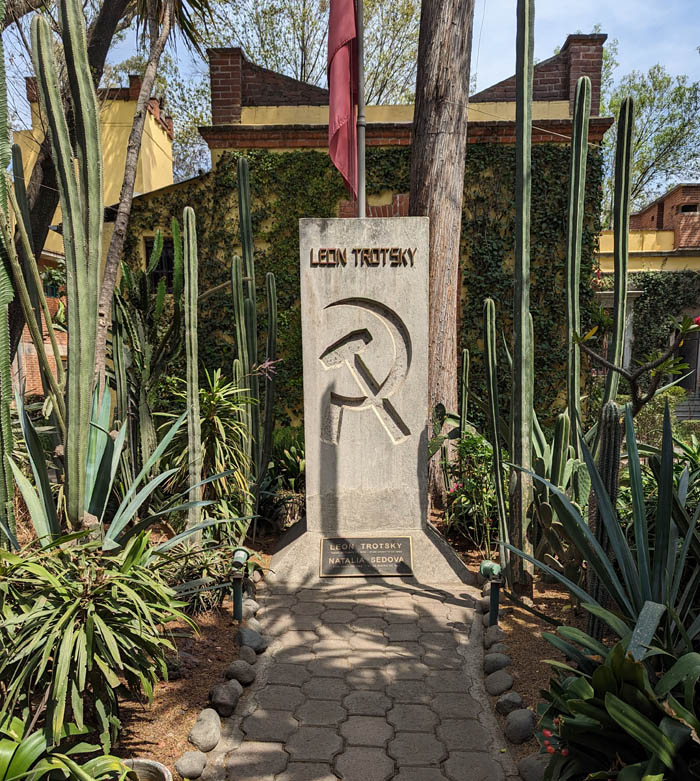
From Revolutionary Hero to Exiled Pariah:
Trotsky’s early life was a whirlwind of revolutionary fervor. A brilliant orator and organizer, he played a pivotal role in the 1917 Bolshevik Revolution, becoming Lenin’s right-hand man. However, ideological clashes with Stalin led to his expulsion from the Communist Party and the Soviet Union in 1929. He embarked on a nomadic journey, bouncing from Turkey to France, Norway, and finally, Mexico, desperately seeking refuge.
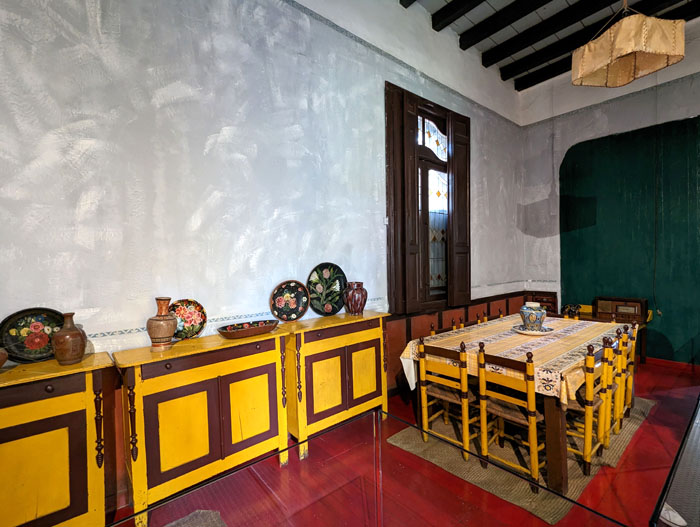
Finding Solace in Coyoacán:
Mexico City’s Coyoacán neighborhood offered Trotsky a temporary haven. He and his wife Natalia Sedova settled in a fortified compound, dubbed “Fortress Trotsky.” Despite the constant threat of Stalin’s assassins, Trotsky remained intellectually active. He wrote prolifically, criticizing Stalin’s regime and advocating for a global proletarian revolution. His magnum opus, “The Revolution Betrayed,” became a scathing indictment of Stalinism.
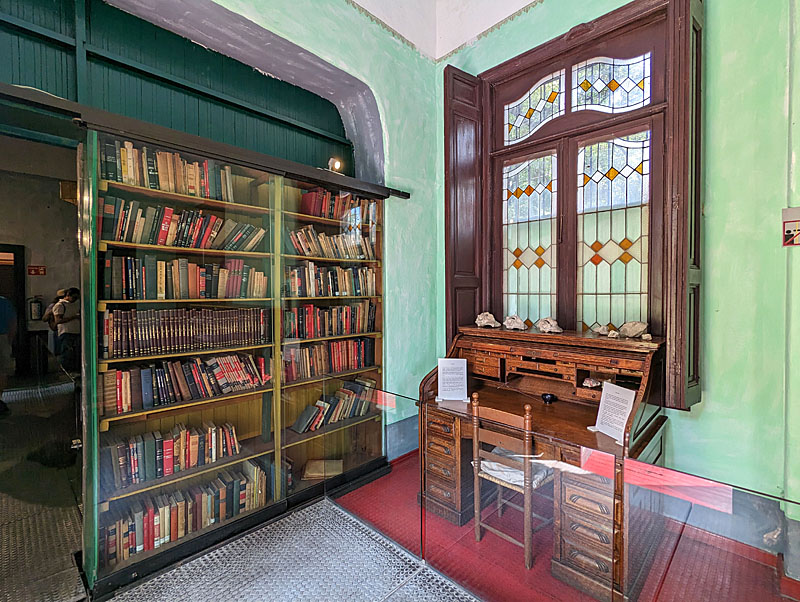
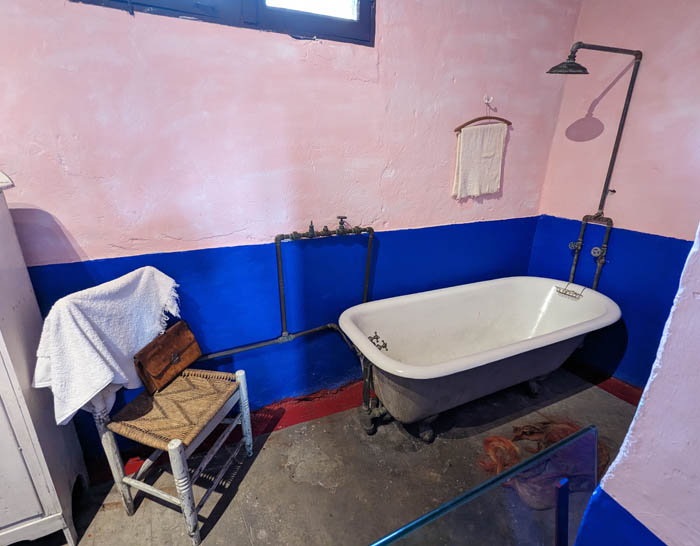
A Beacon for Leftists, a Target for Stalin:
Trotsky’s exile attracted a motley crew of supporters, including painters Diego Rivera and Frida Kahlo. His home became a hub for leftist intellectuals and revolutionaries, who saw him as a beacon of hope against Stalin’s tyranny. However, this notoriety also made him a prime target for Stalin’s agents. Assassination attempts became a grim reality, culminating in the tragic events of August 20, 1940.
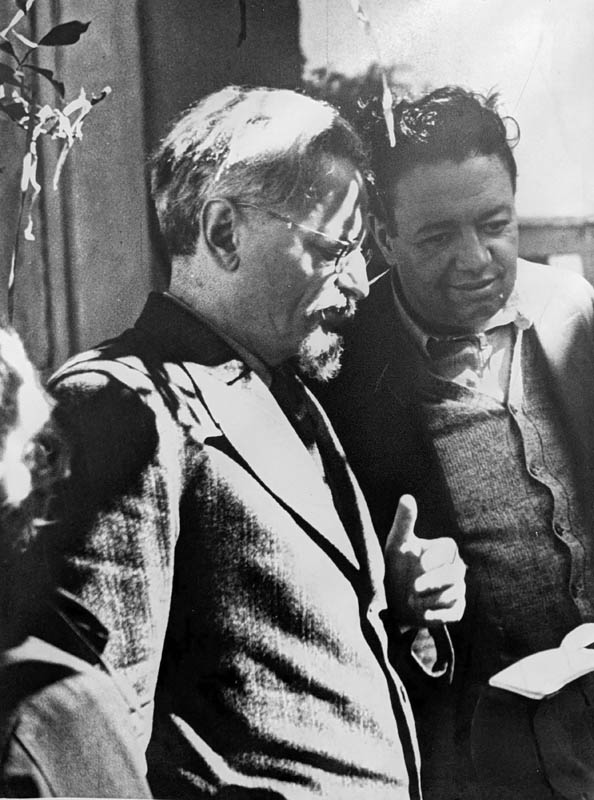
A Brutal End to a Tumultuous Life:
Ramón Mercader, a Spanish communist recruited by Stalin’s secret police, infiltrated Trotsky’s inner circle. Gaining Trotsky’s trust, Mercader struck with an ice axe. While Trotsky initially survived, he succumbed to his injuries the next day. His assassination silenced a major critic of Stalinism and marked a tragic end to a life defined by revolutionary zeal and relentless pursuit of his ideals.
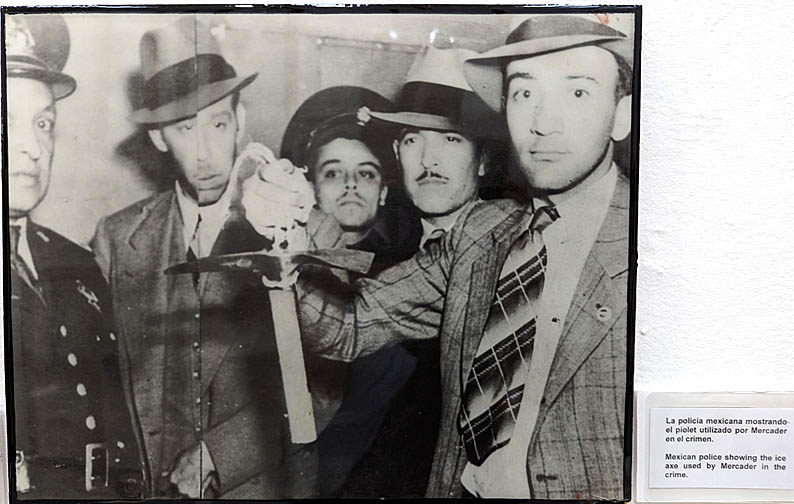
Trotsky’s Legacy: A Complex Tale of Revolution and Exile
Trotsky’s legacy remains complex and contested. He is revered by some as a champion of socialist democracy and a tireless fighter for the working class. Others condemn him for his role in the Bolshevik Red Terror and his unwavering commitment to a revolution that ultimately paved the way for Stalin’s dictatorship.
His exile in Mexico City, however, stands as a testament to his unwavering defiance and intellectual commitment. Though ostracized and hunted, Trotsky remained a thorn in Stalin’s side, his voice echoing through his writings and inspiring future generations of revolutionaries. Trotsky’s story is a cautionary tale of the dangers of political idealism and the dark undercurrents of revolution. Yet, it also serves as a reminder of the power of dissent and the importance of fighting for one’s convictions, even in the face of seemingly insurmountable odds.
To read more about Frida: https://veronicasart.com/frida-kahlo-art-in-st-petersburg/
